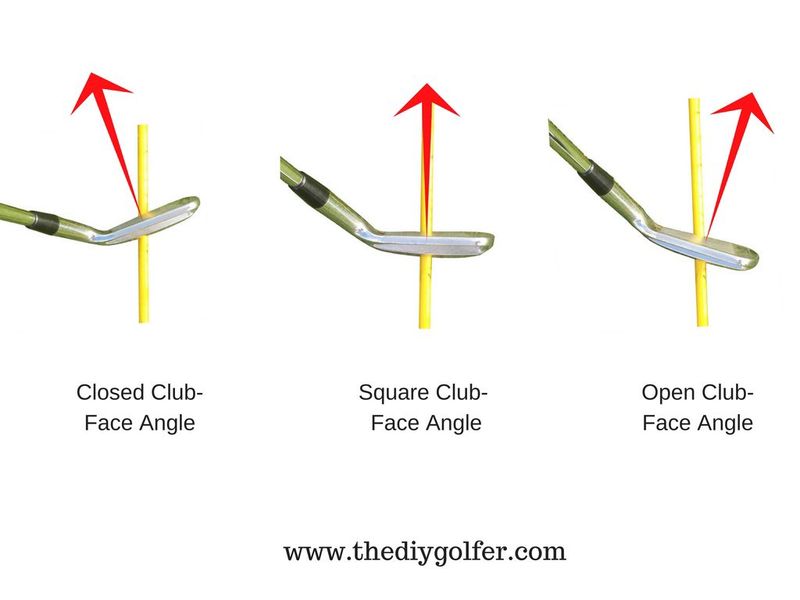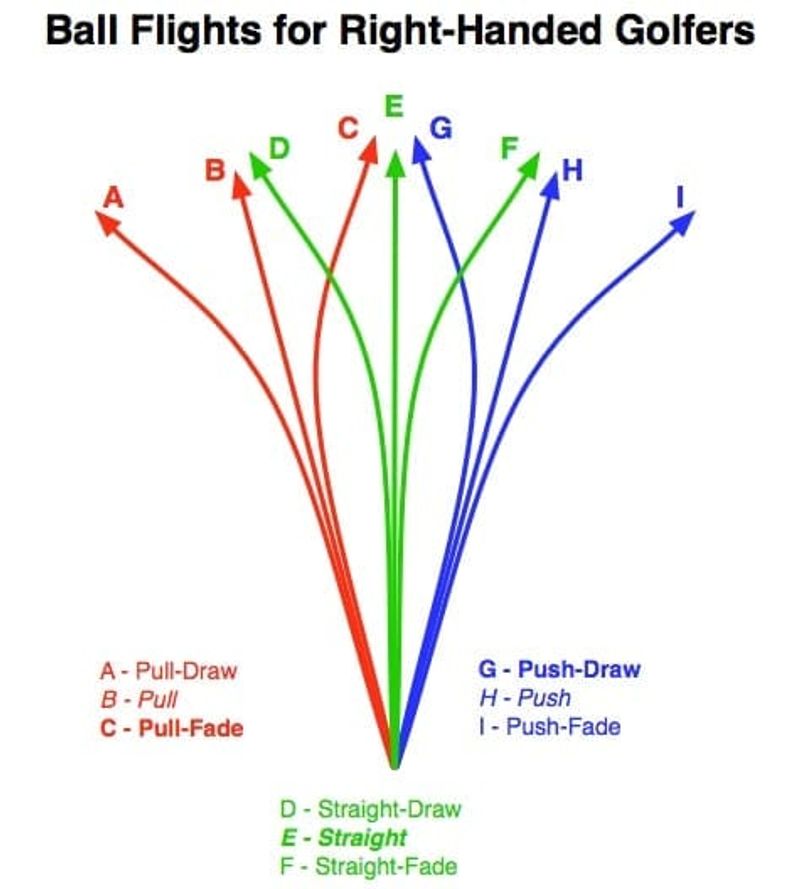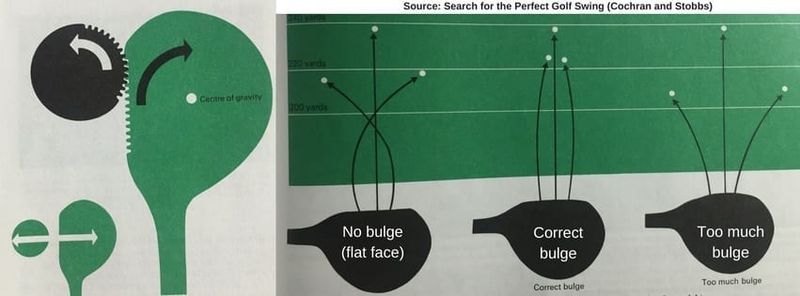This post may contain affiliate links for which I receive a small commission when you make a purchase, at no additional cost to you. See my affiliate disclosure for more information.
Golf is an individualized sport, meaning there are millions of ways to get the job done and post a low score. Most golfers understand this fact, and don't need to be convinced of it. What the majority of golfers don't understand is the ONE thing that ALL great ball-strikers have in common. If you've spent enough time reading golf books, you might already know the secret to great ball-striking. So on the count of three, let's say it together. 1.. 2.. 3!
IMPACT.
That is what all great ball-strikers have in common. Sure, there are other key features of an efficient golf swing, but when every professional golfer reaches that "moment of truth," the geometrical relationships between the body, shaft, and club-head/face are remarkably similar in structure. Once at impact, great ball-strikers are delivering a force just shy of 2,000 pounds to the golf ball, and more importantly, they are maintaining the compression throughout the entire impact interval (roughly half a millisecond).
To the naked eye, this is impossible to see. But thanks to high speed cameras, Trackman, and the basic physics of motion and collisions, we can understand what is really going on at impact, and why it even matters. To those not familiar with the concept yet, it might seem like overkill to learn impact physics and geometry. I will agree, some golfers don't need to learn this stuff. But if you fall on the analytical side of the spectrum, trust me when I say that understanding this is important.
Overview of Impact and Ball-Flight
Unbeknownst to many golfers, there is a ton going on in the world of physics from the moment the club touches the golf ball to the moment the ball lands near (or not so near) the target. I believe that most experienced golfers have an intuitive understanding of these concepts, but as stated previously, it is of great advantage to clearly define what is happening. Although it may not become clear as to why this matters immediately, you will soon find yourself on the golf course making more informed decisions based on this knowledge. I can't convince you of this through text, but hopefully after reading through this post and playing some golf, it crystallizes in your arsenal of golfing knowledge and influences your game in a positive way.
To clear up the fog, let me define all of the factors that influence the flight of a golf ball. Not all of these will be explained in this particular post, as I will be focusing mainly on the directional factors independent of the height and distance factors. All 12 of these factors work together to determine the flight of the ball, but in this post, I will be covering only factors 1-4. If you are curious about the remaining factors, I have described them in my post about the D-Plane (although this is not formally included in the instructional series.)
- Club-face angle
- Club-path angle
- Relationship between sole of club and ground at impact (lie angle)
- Point of contact on the face of the club
- Angle of attack
- Dynamic Loft
- Velocity of club-head (at beginning and end of impact)
- Mass of club-head
- Quality of contact
- Wind
- Temperature
- Elevation difference between start point and end point
If this post gets confusing at any point, stay patient. These concepts will be further clarified in my post about the inclined plane.
Club Face to Club Path Relationship
Thanks to the invention of Trackman and other flight simulators, we have learned a great deal about how different angles and relationships between the swing and the club produce various ball-flights. For the longest time, golf instructors taught their students that the club-path determined the starting direction of the golf ball rather than the club-face. Like all works of science, we correct our previously held assumptions over time and decided to "invent" the "new ball flight laws" as a result of launch monitor data. Of course, physics doesn't change over time, so these are far from "new." Nevertheless, the golf world has gotten the point, and we now understand that the club-face is responsible for the starting direction of the golf ball rather than club-path.
Before I get too far, let me start by defining each component individually:
Club Face Angle
Definition (according to Trackman): "the horizontal orientation of the clubface at the center-point of contact between the club and ball at the time of maximum compression"
This is essentially the angle of the face in relation to the straight-line base of the inclined plane as shown in the picture below:

Club-Path Angle
Definition (according to Trackman): "the horizontal movement of the club head's geometric center at the time of maximum compression"
This is essentially the path which the club moves in relation to the target line:

Face-to-Path
According to Trackman, the golf ball will start where the face is aimed (club face angle), and will curve according to the divergence angle between the club face angle and club path angle. If you want to get technical, approximately 85% of the ball's initial flight direction is determined by the club face angle, and the other 15% by the club path angle. I have explained this phenomenon in more detail in my post about the "D-Plane."
The club face angle to club path angle is simply the divergence of the angles between the two components in relation to the straight target line. This measurement in effect tells us whether a golfer has hit a right-to-left or left-to-right shot. For example, if the club path angle is +2 degrees, and the club face angle is +1 degrees, this means there is a divergence of 1 degree in favor of the club path angle. This shot would start slightly more than 1 degree right of the target (because of the club-face angle), draw (because of the 1 degree divergence), and land somewhere near the target depending on weather conditions and other factors.
There are 9 basic combinations of face-path-target line relationships which are shown in the picture below of the "new ball flight laws:"

There you have it! You now have a basic understanding of what makes the golf ball curve in different directions.
In order to make these laws applicable to your golf game, it is important to cover a few more factors that influence the direction of the golf ball.
Angle between the sole of the club and the ground
Consider a scenario that you might face while hitting on the range. You have just hit a perfectly solid shot, and it has started right of your target, and has traveled perfectly straight. With your current understanding of the ball flight laws, you would conclude that the club face was open at impact, and the club path angle was equal to the club face angle. If only you could close that face a little bit, you would have a nice little draw!
But what if I told you that all you needed to do was adjust the lie angle of the iron you are hitting to get that perfect draw?
Another fact that influences the curvature of the golf ball is the relationship between the sole of the club and the ground at impact. Below is a photo of the different orientations a club's sole can have at impact:

What if I told you that the club-face angle is different in all three of these pictures as a result of their lie angles?
If you don't want to take my word for it, check out the video below where Ralph Maltby (owner of The Golfworks) explains this phenomenon.
So that "push" that you are hitting may not actually be caused by a true open face, but rather caused by the heel of your golf club being raised above the ground at impact, because this causes the face angle to point to the right.
Lastly, before I move into the final component that I will be talking about in this post, let me dispel a myth about lie angles. Many golfers (including my previous self) believe that when the toe or heel of an iron hits the ground, it causes the club-face to twist thanks to added resistance to one side of the club. This is true, but it does not affect the face angle of the golf shot assuming that you have struck the ball before the ground (as a properly compressed golf shot requires). Sure, the club face will twist after the ball has left the club-face, but this does not affect the ball flight despite the club twisting in your hands.
On that note, there is something that causes the clubface to open/close during impact, which will cause a difference in the flight of the ball.
The Gear Effect
So far, we have determined the conditions that affect the flight of a golf ball assuming the ball was struck on the center of the clubface. But what happens when you miss the center of the clubface like many golfers frequently do?
This is where the "gear effect" comes into play. To understand the gear effect, it is important to understand what is happening at impact. According to Newton's third law of motion, for every action, there is an equal and opposite reaction. In other words, when the club strikes the ball with a force aligned towards the target, the ball exerts a force directly against that of the club head. When the ball is struck in the center of the club face (center of gravity), that force doesn't cause any twisting of the face. But when the ball is struck on the heel or toe of the club, the force that is exerted by the ball on the club head causes the club head to rotate around the center of gravity (toe strike causes face to open while heel strike causes it to close).
When this rotation about the COG happens, the gear effect takes place, and can be represented by the photo below:

As the face opens or closes, the golf ball slides across the face, tilting the spin axis of the golf ball (see D-Plane post), which results in an alteration of face angle AND spin axis at impact.
The net result?
Toe shots cause the club face to open, but create a spin axis tilted in the opposite direction, causing a draw for the right-handed golfer that generally starts to the right of the target and lands at the target (assuming the club-face has the correct bulge on it).
Heel shots cause the club face to close, but create a spin axis tilted in the opposite direction, causing a fade for the right-handed golfer that generally starts to the left of the target and lands at the target.
This comes at the expense of distance, and although these shots may end up at your target, they will most likely fall short of it considering you have chosen the correct club.
Also, notice how there is a bulge on your driver and woods. This bulge is what causes the ball to start right/left of the target on off-center shots, and curve back to the target. Not only does striking the ball off-center open the face during impact through the gear effect, the bulge on the club effectively opens the face even further. Without this bulge, the force that the ball exerts on the club face would not open/close the face enough to compensate for the spin produced by the gear effect, and would cause the ball to start right/left of the target, and curve past the target (see diagram in picture above).
Below is a video representation of the "gear effect:"
Putting Everything Together
Hopefully by now, you have a much greater understanding of what factors influence the flight of the golf ball. Although there are still many other factors involved in the flight of the golf ball, you should now at least be able to explain to yourself why your golf ball keeps slicing, and fix it accordingly. With this knowledge, you know that by aiming further left to fix a slice, you are simply creating a creater angle between the club-face angle and club-path angle, resulting in an even larger slice. Additionally, next time you need to hook the ball around a tree, you will aim your club face to the right of the tree, and your body even further right rather than taking Nick Faldo's advice and aiming your club-face at the target.
